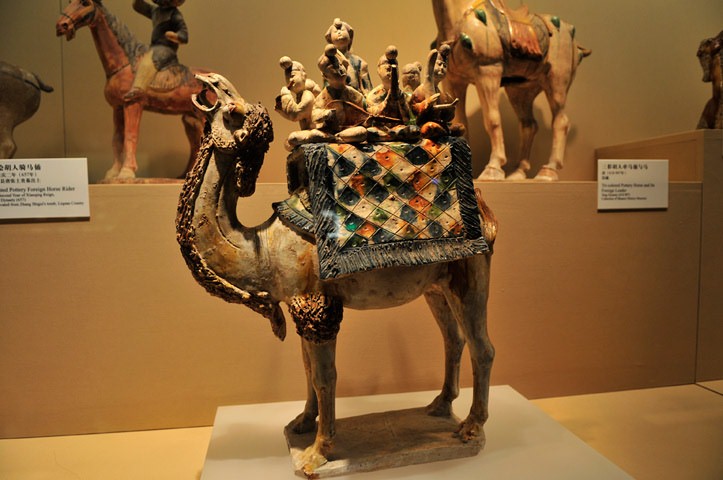Tour in Depth New
Local Xi'an Tours
Home >> China Attractions >> Xi’an >>Xi'an Attractions >> Shaanxi History Museum
Shaanxi History Museum
- Overview
- Know More
- Must See
- Photos/Video
Chinese people often say that “You can experience 50 years changes of China in Shenzhen, 500 years in Beijing, but 5,000 years in Xi’an.” Only in Shaanxi History Museum you can see these changes in past 5,000 years. More than 13 glorious dynasty including Zhou Dynasty (1027 BC–221 BC), Qin Dynasty (221 BC–206 BC) Han Dynasty (206 BC–220 AD) and Tang Dynasty (618–907 AD), with Xi’an as its capital, created plenty of historic and cultural relics. Therefore, Shaanxi History Museum was born as the place for researching and displaying such 5000 years’ history.
Shaanxi History Museum is located in northwest of Big Wild Goose Pagoda, open to the public in 1991. The museum boasts 370,000 pieces relics range from prehistory when human just use simple stone tools to all kinds of exquisite wares in the Qing Dynasty (1644–1911). These relics have high value not only in quantity but also in quality.
Shaanxi History Museum is located in northwest of Big Wild Goose Pagoda, open to the public in 1991. The museum boasts 370,000 pieces relics range from prehistory when human just use simple stone tools to all kinds of exquisite wares in the Qing Dynasty (1644–1911). These relics have high value not only in quantity but also in quality.
 |
 |
| Main Hall of Shaanxi History Museum | Celadon Bottom-filled-in Kettle with a Loop Handle |
Select Other Favorite Attractions
Recommended China Tours with Xi'an
|
|||||||||||||||||||||||||||||||||||
|
|||||||||||||||||||||||||||||||||||
|
|||||||||||||||||||||||||||||||||||
|
|||||||||||||||||||||||||||||||||||
|
|||||||||||||||||||||||||||||||||||
|
|||||||||||||||||||||||||||||||||||
About Us | Contact Us | FAQ | Privacy Policy | Terms and Conditions | Links | Sitemap
Guide for China tour, offers most value & amazing experience. In China, you can rely on us
Copyright © 2001 - 2025. All Rights Reserved to ChinaTourGuide.Com
Guide for China tour, offers most value & amazing experience. In China, you can rely on us
Copyright © 2001 - 2025. All Rights Reserved to ChinaTourGuide.Com
China Tours | China Tour | China Attractions | Yangtze Cruise | China Tour Agency | China Travel | Huangshan Tour | Beijing Tours | Shanghai Tours Guilin Tours | Suzhou Tours | Hangzhou Tours | Tibet Tours | Yunnan Tour | Hongkong Tour | Xian Tours | Canton Fair | Canton Fair 2025
Hotel Guangzhou | Guizhou Tours | Hong Kong Hotels | 香港酒店 | 广州酒店 | 广州会议酒店 | Indochina Tour
Guide for China tours, offers most value & amazing experience. Chinatourguide.com. Your reliable China tour agency.
Hotel Guangzhou | Guizhou Tours | Hong Kong Hotels | 香港酒店 | 广州酒店 | 广州会议酒店 | Indochina Tour
Guide for China tours, offers most value & amazing experience. Chinatourguide.com. Your reliable China tour agency.

















